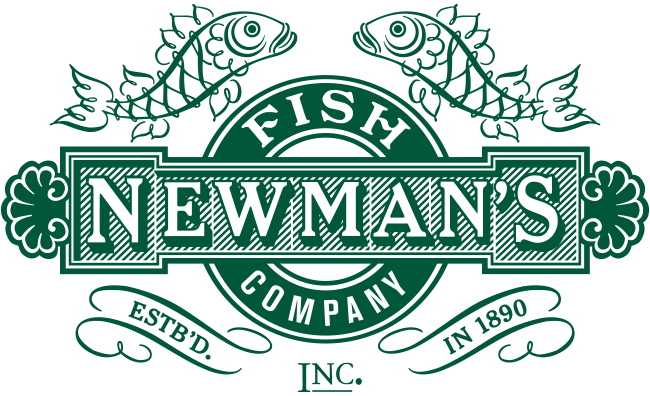Chinook - King salmon (Oncorhynchus tshawytscha)
Chinook salmon are also called King salmon and are the largest of the Pacific salmon and found from along the coast from Southern California to Alaska. Like all Pacific salmon, Chinook are anadromous, which means they hatch in freshwater streams and rivers, migrate to the ocean for feeding and growth, and return to their natural waters to spawn.
Coho or Silver Salmon (Oncorhynchus kisutch)
Coho or Silver salmon are found in streams and rivers throughout much of the Pacific Rim but most commercial caught fish are coming from Alaska with the best being troll caught. They tend to have a milder flavor and are smaller than the Chinook.
Pacific salmon are caught by a hearty fleet of troll fishers using hook and line methods to avoid damage to their prized catch. These salmon are individually harvested from the cold Pacific during their prime, while feeding on 100% natural food and they retain all of their nutritional and tasty fats and oils, which would become their source of energy for the spawning run later in the year.
Newman's presents frozen at sea, FAS, salmon when fresh caught is not available. We feel the quality of the FAS is a close to fresh as possible and always delicious. The fish are frozen on the boats just hours after being caught at -40 degrees to maintain flavor and texture.
If we were to rate salmon on flavor and texture the order would be Chinook, Silver, Chum or Dog Salmon, Pink or Humpy.
Barbecuing/grilling is our favorite for salmon because the natural smoke flavors are enhanced by the rich tasty oils of the fish. Baking is another option. Simple is best.
Wild Yukon River Salmon (Oncorhynchus Keta)
Yukon River Keta Salmon, also called Yukon Chum, Dog, Calico, or Silverbrite salmon. Don't be fooled by the name, this is a dip-net caught salmon from the Yukon River and has a higher oil content and eats better than most King salmon. The Keta travel in some instances over 2000 miles to their spawning grounds and a 'genetically programmed' to store oil for the journey.
The native Yupik Eskimo fisherman have used dip-net fishing to catch the Keta so they can put the King back into the Yukon with hopes of replenishing the supply of the depleted King. The Yukon River salmon are harvested from a certified sustainable fishery, as approved through the Marine Stewardship Council, and are a very economically priced salmon. These Keta are handled with care and flown in fresh from Alaska. It is firm texture and orange-red in color. Try this fish and we know you will be delighted.
General Cooking Tips for Salmon
Oregon Ocean Chinook Salmon cooks in minutes. A small cut in the thickest part of the meat shows it is done when it flakes easily and appears opaque throughout. Do not overcook because the salmon will continue to cook for a short time after the fish is removed from the heat source.
- For pieces 1/2 to 3/4 inches thick - Cook 5 to 8 minutes
- For pieces 1 to 1 1/2 inches thick - Cook 10 to 12 minutes
Bake - Bake at 400 degrees F until the fish is cooked according to the above times.
Broil - Lightly oil broiler pan. Place fillets, skin-side up, on pan. Broil 4 inches from heat source until done. Do not turn.
Grill - Brush both sides of the salmon with vegetable oil. Grill, skin-side down, on hot griddle. Turn halfway through to cook evenly.
Poach - Poach fish in water, fish stock or a combination of white wine and stock or water. Fill pan large enough to hold fish with enough liquid to cover fish completely. Bring to boil, reduce heat to simmer and add fish. Cook until done.
Sauté or Pan Fry - Heat a small amount of oil or butter in a heavy fry pan. Cook fish over high heat, turning once to finish.


